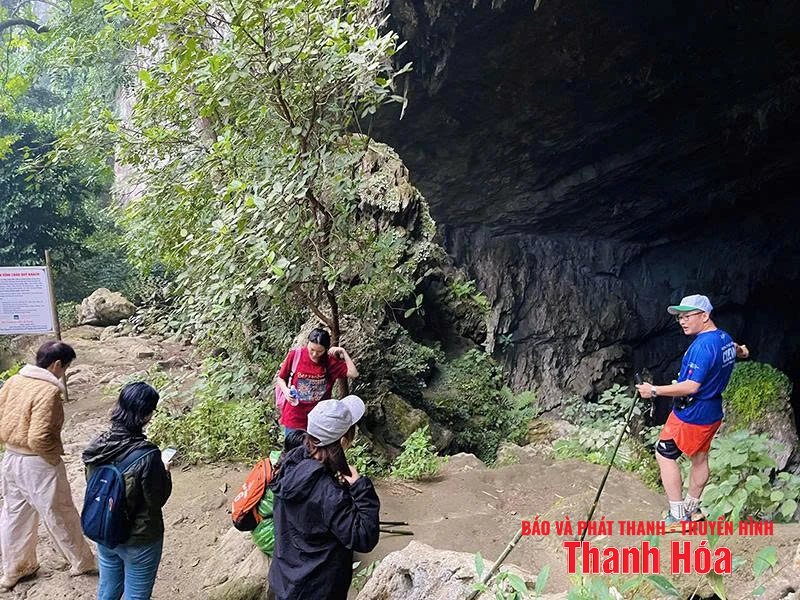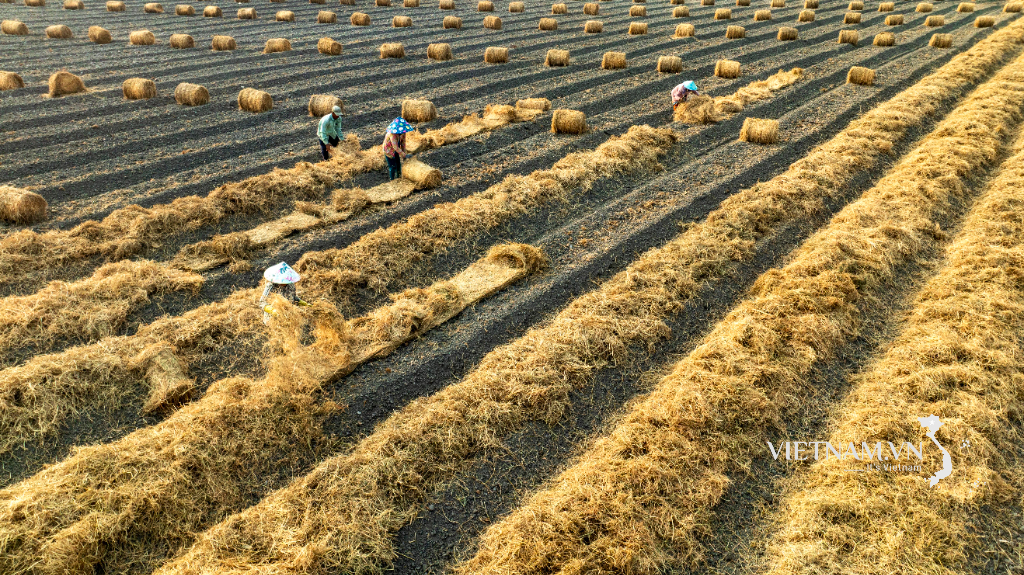Tourists trek to explore the Pu Luong Nature Reserve.
The mountainous western region of Thanh Hoa province boasts incredibly rich natural tourism resources and beautiful, abundant landscapes. In particular, its diverse terrain, from lush primeval forests and terraced rice fields to crystal-clear streams and majestic waterfalls hidden within nature reserves such as Pu Luong and Pu Hu, and national parks like Xuan Lien and Ben En, creates trekking routes ranging from short, easy trips to longer, more challenging ones. Furthermore, the mountainous region of Thanh Hoa is home to ethnic minority groups such as the Thai, Muong, Mong, Dao, Kho Mu, and Tho. These factors provide ideal conditions for tourists to experience the region's nature and culture. To date, 12 trekking tours exploring the mountainous areas of Thanh Hoa province have been officially announced, with some routes attracting particular attention from tourists such as Pu Luong peak, the adventurous Wolf Island, Pu Hu peak, the green chò tree heritage site, Pu Gio peak, etc.
Tour guide Le Duc Hung ( Hanoi ) shared: "With over 10 years of experience leading trekking tours in the North, Thanh Hoa is a destination with great potential if properly organized. Since the province announced trekking tours, I have led several groups to Pu Luong and some deep forest routes in the mountainous areas. The feedback from tourists has been very positive; they appreciate the fresh air, the magnificent scenery, and especially the cultural experience with the local people. However, currently many routes lack basic infrastructure such as access roads to villages, signposts, and accommodation facilities friendly to trekking tourists. If these things are improved, I believe Thanh Hoa will become one of the most attractive trekking destinations in the North."
Sharing the same view, Mr. Vu Tuan Phong, CEO of SPO Travel - a company specializing in organizing sports tourism tours - said that in recent years, young tourists and international visitors have tended to seek authentic experiences from nature. Trekking routes that contain elements of challenge and exploration are becoming increasingly popular.
“Besides Pu Luong, I believe that the western part of Thanh Hoa province still has many undiscovered destinations. What is lacking is not beautiful scenery, but rather attractive tourism products that haven't been ‘packaged’ effectively, with proper marketing and effective connection between the government, businesses, and the community. If this is achieved, trekking could absolutely become a distinctive brand of Thanh Hoa tourism, competing with trekking destinations in the Northwest region,” Mr. Phong remarked.
According to some tourism experts, realizing the potential of trekking as an attractive form of tourism requires systematic, long-term strategies instead of the fragmented development currently underway. First and foremost is the planning and development of unique trekking products that are closely linked to the identity of the local community. Each trekking route should not simply be a journey of walking and climbing mountains, but should become a captivating story with complete experiences of nature, people, and culture. For example, a trekking tour to the summit of Pu Luong should not only be a journey through villages like Don and Kho Muong, but also an opportunity for tourists to learn how to weave brocade, try their hand at farming in the highlands, enjoy local specialties, and immerse themselves in the activities of the local people. These experiences help trekking become a journey connecting with nature and unique cultural values, not simply "walking through the forest."
Furthermore, infrastructure and support services need to be invested in comprehensively. Roads to trekking destinations need to be improved to ensure safety; signage, directions, rest stops, and emergency rescue systems must be standardized. This not only enhances the experience but is also crucial for ensuring the safety of tourists. In particular, it is necessary to train dedicated guides who understand the terrain, local culture, and possess skills in handling situations and providing first aid. This is an area where many current trekking destinations are still weak and lacking.
In particular, the role of local communities needs to be emphasized. Training the community on environmental protection, welcoming tourists, developing homestay services, handicrafts, etc., not only helps them earn extra income but also contributes to raising awareness of preserving cultural identity and protecting natural resources. When winding trails through the mountains become a lifeline, when local people become true cultural ambassadors, and when tourists not just come and go but carry with them deep memories of a magical land – that's when trekking becomes not only attractive but also a new highlight of Thanh Hoa tourism.
Text and photos: Hoai Anh
Source: https://baothanhhoa.vn/de-trekking-tro-thanh-loai-hinh-du-lich-hap-dan-255249.htm


















































































































Comment (0)